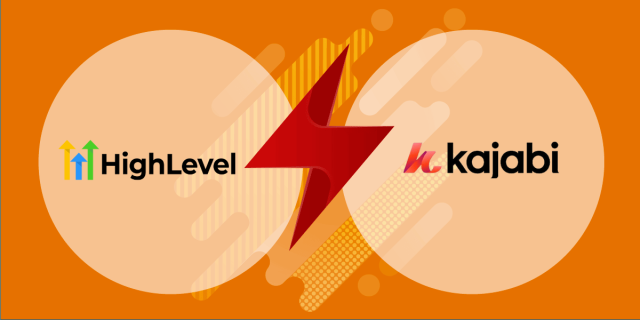Are you feeling burnt out as an agency owner?
Even when you have high-paying clients, you might feel as if you’re merely trading hours for dollars.
You might feel like you are a glorified freelancer rather than a business owner.
But what if there’s a way to transform your service business?
Let’s see how to turn your service business into a coaching business!
Refine the process
In the service business, your clients are paying you money because they are getting something in return — the value that you are providing.
So, you need to clearly articulate the transformations you aim to deliver in your coaching business.
Then, you need to work backward.
Break down the typical steps that most of your clients follow to get the desired results.

Most of the time, you can boil this down to 6 different steps that any of your clients need to follow.
If you are struggling to come up with these steps, just think of your most successful clients and the repeated processes that drove them to really good results.
You may need to create documentation like SOPs, checklists, regarding all the steps that your clients took.

At this stage, you need to document everything and also refer to the existing data you have. You may have your previous meeting calls with your clients.
There, you get some insights on what were the challenges that they may be facing.
More importantly, you need to document a big list of pain problems that your clients faced throughout the process. You need to literally log them down.
Perhaps you can use Notion to create a database called “Challenges” and list down all the challenges that your clients encountered when executing different steps or milestones.
Based on these challenges, you need to refine the process to get results for your clients.
Share your learnings

To attract leads to this training course, you’ll need to create online content in the form of blogging, YouTubing, or podcasting.
To determine the best content channel for you, ask yourself:
“What kind of person am I?
Do I prefer writing content, or am I comfortable in front of the camera?”
If you excel at both, read this post before making your decision.
If you’re comfortable on camera, consider a YouTube-centric approach. Publish YouTube videos on topics that your potential customers may be curious about before purchasing your digital product.
At this point, you may want to reflect on your meeting calls or the challenges you’ve noted from client meetings. This can provide inspiration for creating new content.
If you’re into videos, you can easily repurpose these YouTube videos into blog posts with the help of AI and a content editor.
Also when you’re sharing your learning experiences, make sure that you highlight the success stories of your other clients when creating content.
It might be a good time to reach out to your clients and ask them for their success stories or case studies, which you can use when creating content.
Build your audience

The aim of creating content is to attract an audience. To encourage them to subscribe, you need to provide lead magnets (e.g., a free guide or another enticing offer).
And then you can use marketing tools such as email marketing, webinars, or even create communities to nurture them and guide them along your coaching funnel.
The current trend is to drive your audience to an email list and then to a community-platform where they get free value. Here, they can interact with other community members and access your value-added free courses, videos, or a series of webinars.
Further down the line, you’ll nurture the community towards your paid programs.
Outline your course
Creating a course from your service business can be tricky.

Firstly, you need to structure your course properly by laying out an outline in an app like Dynalist or even a Mindmap.
Before recording the course videos, you need to let the outline refine and evolve. Once you create course videos, you can’t reverse it.
So, take your time and refine the outline based on comments that you may have received on your YouTube videos, community interactions, or challenges that your clients may have faced.
Refine it continuously to not only make it more detailed and transformation-focused but also actionable.
When outlining you need to ensure that your course is evergreen so you don’t need to repeatedly update your training course.
💡 In your content contenr, focus on evergreen principles or thinking behind your technicalities rather than just focusing on the current technicalities. This is important when making your course evergreen.
Lastly, if you are building a free community, you can have one-to-one calls with or weekly calls with your community members to get their insights on how to improve your course and finalize the outline.
Launch MVP

You may already be familiar with the term MVP, which stands for minimum viable product.
In this case, you’ll be creating only a portion of your training course and releasing it.
The idea is to record a minimum viable course, gather feedback, and then iterate and add in more modules or lessons.
Don’t worry about having a perfect course from the start.
Just launch it and let it evolve organically over time.
Ultimately, the emphasis should be on meeting the needs of your audience based on their feedback instead of solely relying on your assumptions.
Remember, your personal ideologies might not always align with actual data from the real world.
Take it to the next level
You see, a service business can be draining.

You can only impact a few people at once, and there is no network or flywheel effect.
But, in a coaching business, you allow your clients to implement the solutions themselves.
Alongside the course, you need to provide them with something actionable, to enable them to succeed on their own.
You can even organize a challenge or a hackathon.
This can involve hosting a call every week with your coaching clients. You can encourage them to go through the course, explain the principles, and maybe even implement the action items right there in the call.
In fact, I have a dedicated blog post on how to host online challenges.
With a community-centric coaching model, you need to help them learn and also implement it right away.
You can also provide some incentive for them to complete the challenges and achieve results.
Once they’ve achieved results, you can recruit highly vetted, qualified individuals to your high-ticket consulting or training courses, or even done-for-you services.
Like this, you get the best of both worlds—high-ticket consulting and low-ticket courses.
I hope this gives you a clear idea of how you can convert your service business into an online course product.
It’s all about identifying and documenting the process that all your clients are implementing in your service business. Then, you turn it into a product, impacting more clients, and helping them at higher levels while charging them more further down the funnel.







